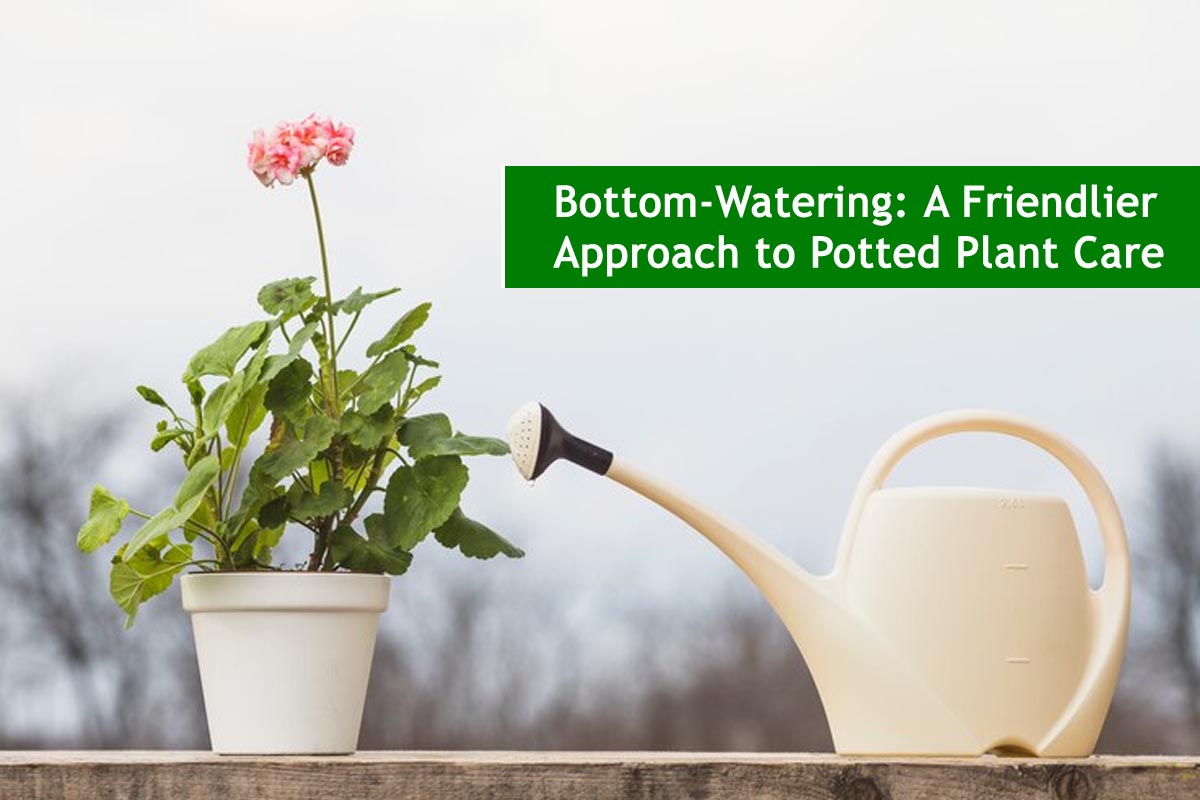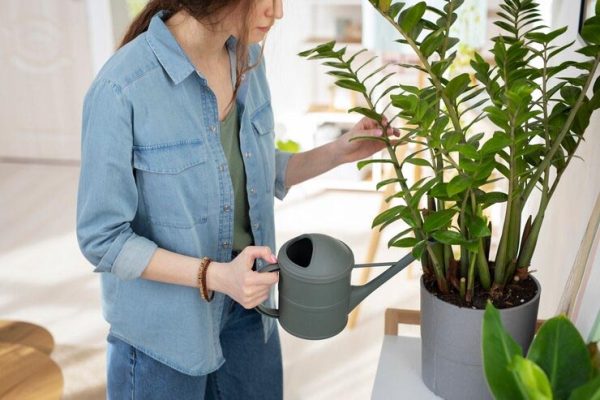
Bottom-Watering: A Friendlier Approach to Potted Plant Care
Caring for potted plants is more than just a green-thumb endeavour; it’s like cultivating a friendship with nature. As any seasoned plant enthusiast knows, water plays a pivotal role in their growth. However, the delicate balance of providing just the right amount can be a challenge. Many opt for the conventional method of pouring water directly onto the soil surface, but here’s a gardening secret – that might not always be the best strategy.
Enter bottom-watering, a revolutionary approach that quite literally flips the watering game on its head. This method involves providing hydration from the bottom up rather than the top down. Why is this so cool, you ask? Well, it ensures that the roots of your plants receive the water they need, fostering robust and healthy growth. And that’s not all – bottom-watering also helps you steer clear of pesky problems like fungus making a home in your soil.
So, if you’re itching to delve into the world of bottom watering and want to know the ins and outs of this game-changing technique, you’re in the right place. In this article, we’ll explore what bottom-watering is all about and guide you on implementing it effectively, ensuring that your potted plants flourish like never before. Get ready to nurture your plants and witness the transformative power of watering from the bottom.
Also Read This : Thriving in Minimal: 7 Indoor Plants That Excel in Low-Nutrient Soil
What is Bottom Watering?
Bottom watering is a plant-care technique that involves hydrating plants from the bottom rather than the conventional top-down method. This approach adds water to a tray or container beneath the potted plant, allowing the roots to absorb moisture as needed. This method ensures a more direct and efficient water delivery to the root system, promoting more robust and healthier growth. Beyond the benefit of targeted hydration, bottom watering helps prevent issues such as soil-borne diseases and fungal growth. It’s a savvy gardening strategy, beneficial for maintaining optimal soil moisture levels and fostering robust plant development.

Also Read This : Homegrown Happiness: Tips and Tricks for Thriving Strawberry Plants
Which kind of plant requires bottom watering
Houseplants:
Many indoor plants, such as snake plants, pothos, and peace lilies, can benefit from bottom watering. This technique helps prevent overwatering and ensures consistent soil moisture.
Succulents:
Bottom watering is particularly suitable for plants like cacti and other succulents, as it minimizes the risk of water sitting on their leaves, which can lead to rot.
Also Read This : Growing Brinjal (Eggplant) at Home: A Comprehensive Guide for a Bountiful Harvest
Herbs:
Herb plants like basil, mint, and parsley thrive with bottom watering. This method helps maintain soil moisture without wetting the leaves, promoting healthier growth.
Seedlings:
When nurturing seedlings indoors, bottom watering provides a gentle and effective way to keep the soil consistently damp without disturbing the delicate young plants.
Also Read This : Green Serenity: Key Considerations for Thriving Balcony Plants
African Violets:
African violets, popular indoor flowering plants, benefit from bottom watering to maintain even soil moisture, contributing to their overall well-being.

Also Read This : Planting Oriental Arbor-vitae Made Simple: Easy Tips for Success at Home
How to Bottom-Water Plants:
Step 1: Select pots with drainage holes at the bottom to allow water to pass through.
Step 2: Place a tray or container beneath the pot to collect the water runoff.
Step 3: Instead of watering the soil directly, pour water into the tray and allow the soil to absorb it gradually.
Step 4: Over time, the soil will soak up the water like a sponge absorbing moisture.
Step 5: Check the tray – if it’s empty or the water is absorbed, your plant has taken in the necessary amount. If water remains, you may have overwatered.
Step 6: Monitor the soil’s moisture level. When the top layer feels slightly dry, it’s time to bottom water again.
Remember, different plants have varying water requirements, so adjust the frequency based on your plant’s specific needs.
Also Read This : Embracing Prosperity with Money Plant to Aloe Vera, These 7 Auspicious Plants




